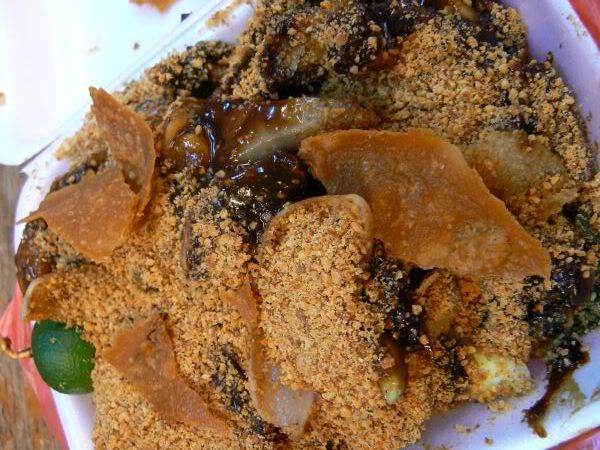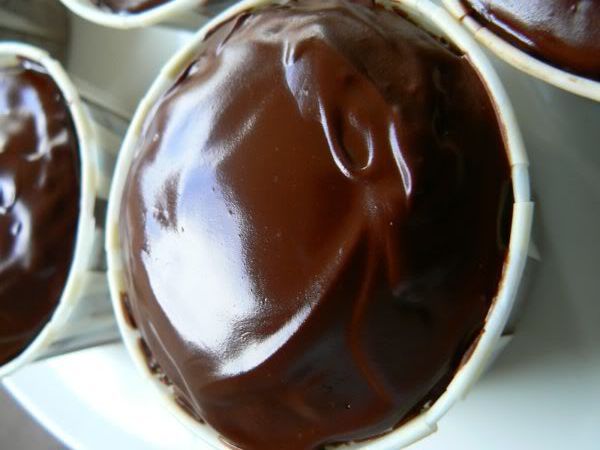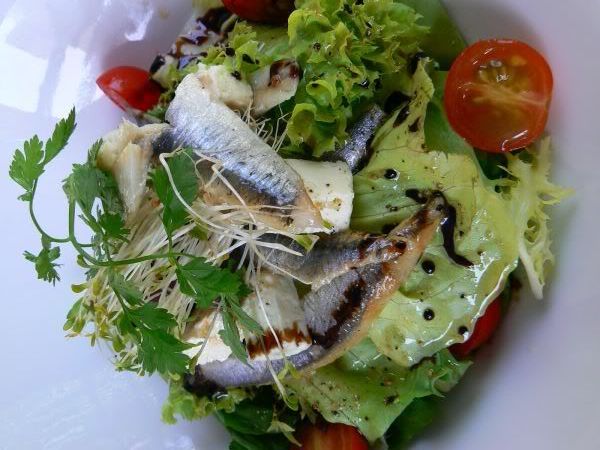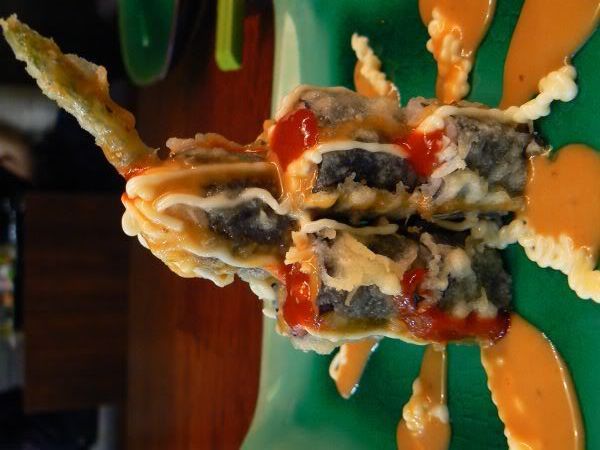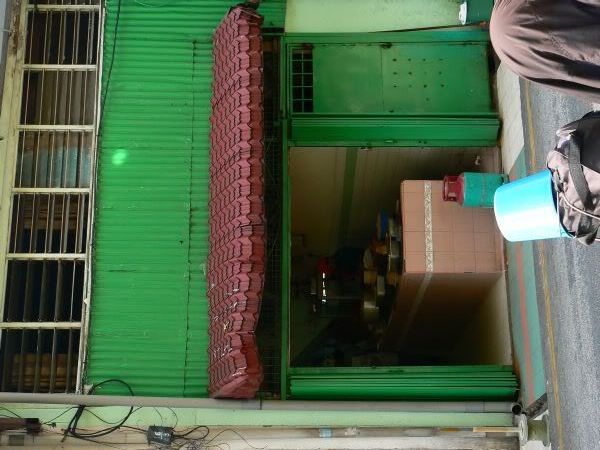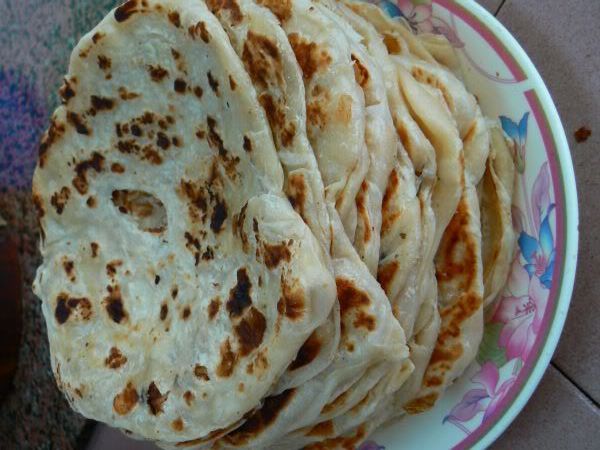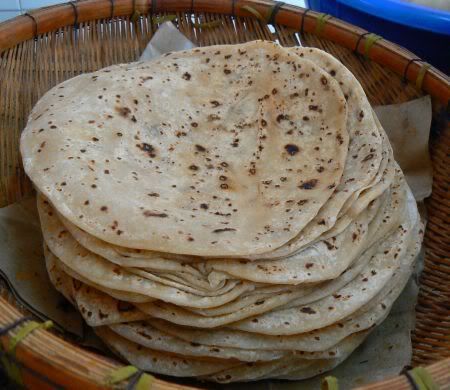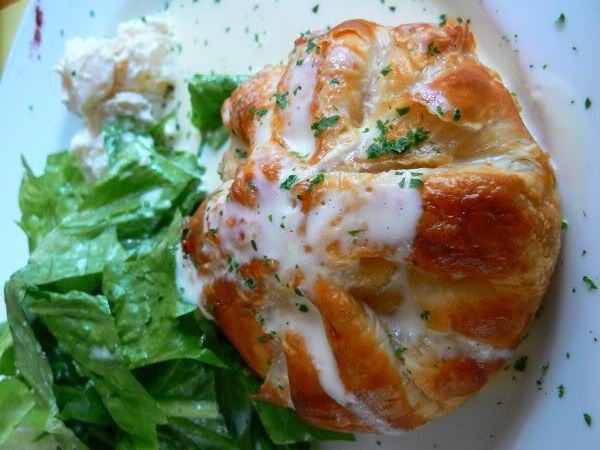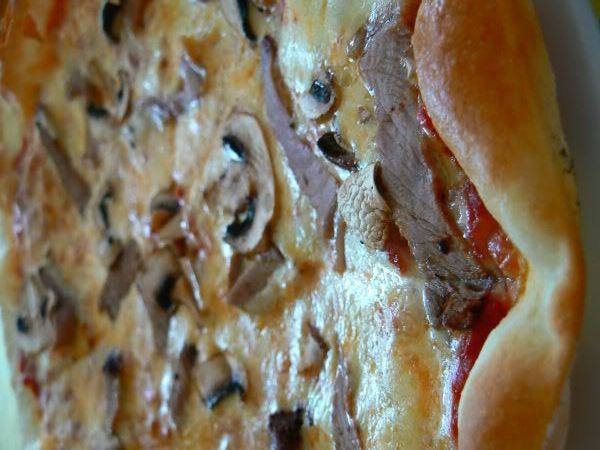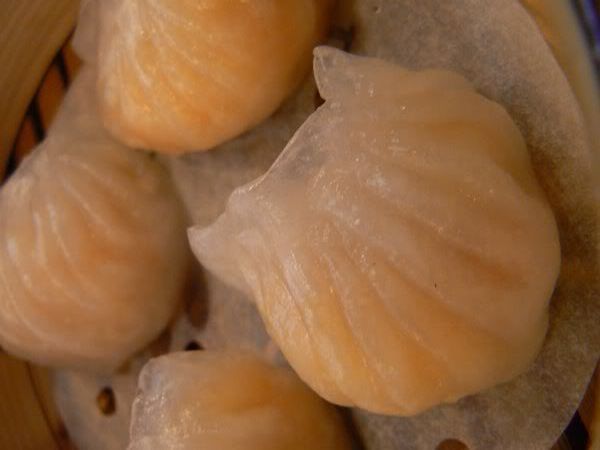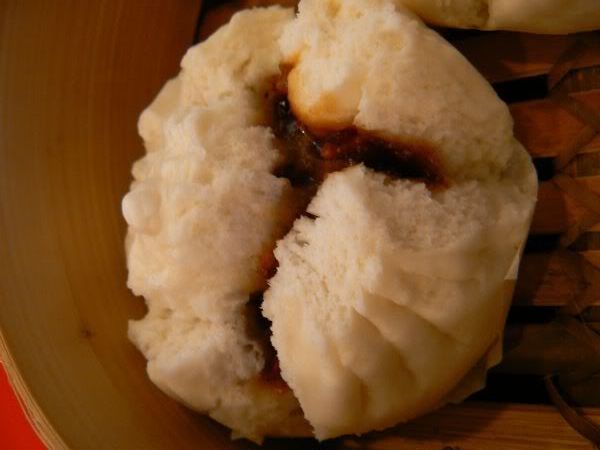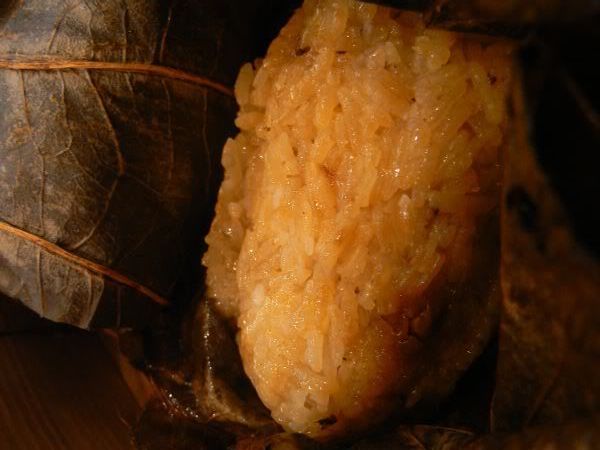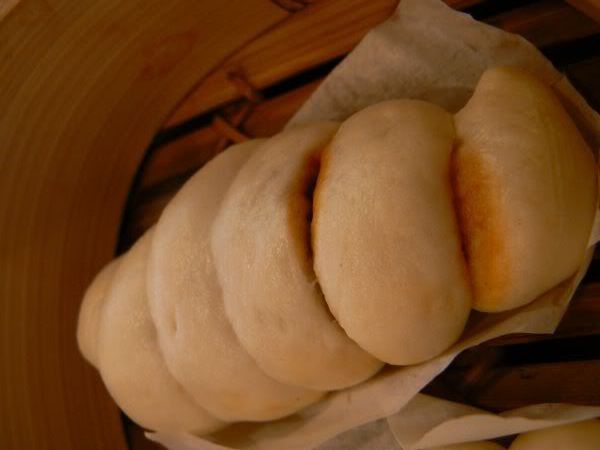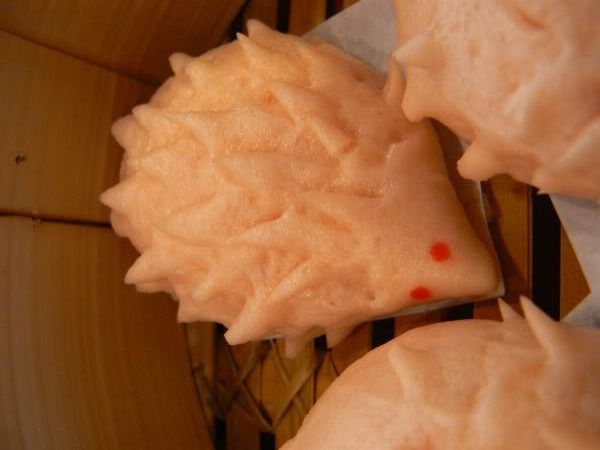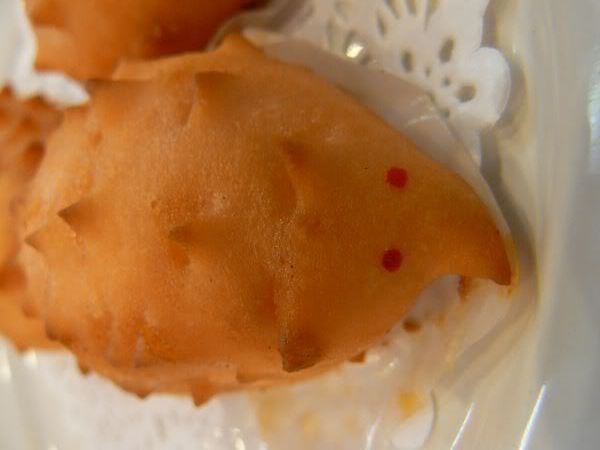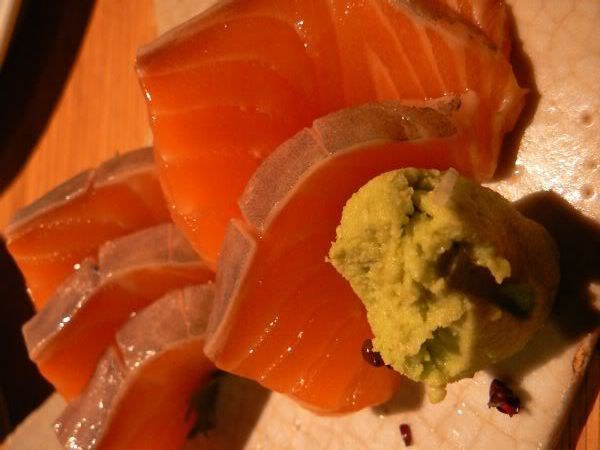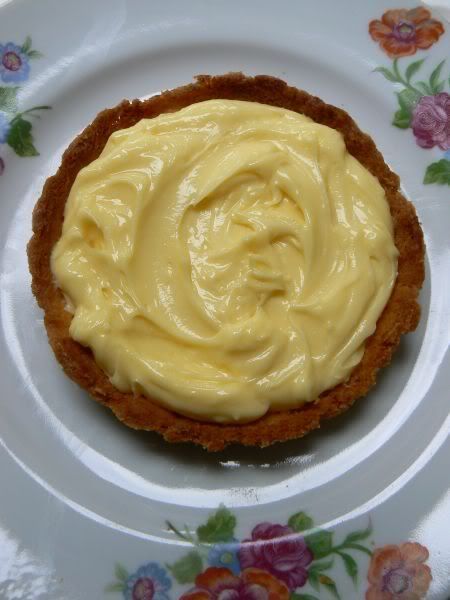
I'm currently in LOVE with my new Dorie Greenspan cookbook, Baking from My Home to Yours. Everyday, I thumb through it looking for something new to try - most of the time they're just dreams but some do turn into reality like the Chocolate Chocolate Cupcakes, Flaky Apple Turnovers and now the tart of my dreams.
I'm kinda hopeless when it comes to pies and tarts probably because I don't make enough to practise hence I wanted to try this Lemon Cream Tart real badly. I was tempted to make it but lacked a candy thermometer which is a must for the lemon cream. Not sure why but bake shops in Kuala Lumpur don't seem to readily stock the thermometer. Thus when I spied one at Pantry Magic in Singapore, I quickly grabbed it and vowed to make this tart as soon as possible.
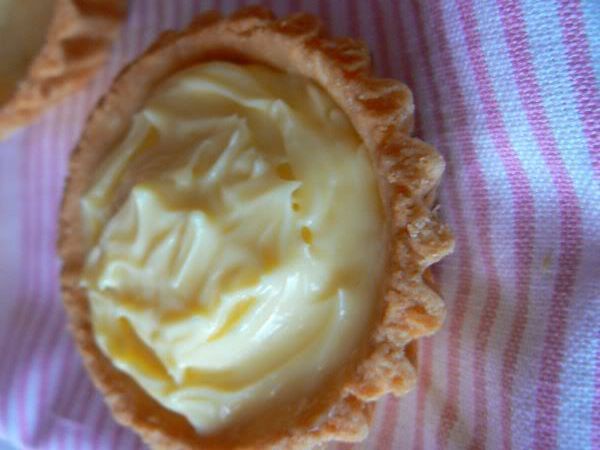
Once you have the thermometer, making the lemon cream is a breeze. All it needs is patience, an essential ingredient in baking and cooking to make it work. I used a blender to add the butter which was really easy and left it in the fridge overnight for the flavours to develop. Whip it up the next day in a bowl and spoon it in a pre-baked tart shell of your choice. The cream was so light with a clean lemon flavour. Not too sour and utterly delectable. We were meant to share the small tart in the first picture but I ended up eating almost all of it as I couldn't stop myself.
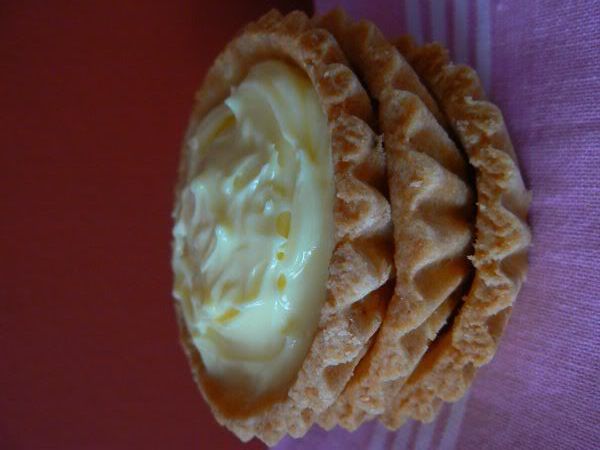
I also played around with different tart shells in the pictures. The first one is my own tart shell made from a recipe from Dorie Greenspan's cookbook. It was also easy to make and so light plus crumbly. To test the tart dough, I had made them with small tart pans versus a 9 inch tart pan. I only baked two tart shells while the other two have been kept in the freezer for later. For the mini tart shells, I had found them at the bake shop namely Guten Braun at Seapark, Petaling Jaya. They're made from ground almonds and a steal since they cost only 60 sens each. Tastewise, they weren't as light as my home made one. However, they're really handy if you can't be bothered to make the tart shells.
As the recipe uses American measurements, try GourmetSleuth to convert. It's pretty accurate as measurements differ for each ingredient. On another note, for those of you who love food reviews, take note that from July onwards, I will be posting during the weekend together with the Weekend Cat Blogging entries. Have a great weekend and if you have time, make this Lemon Cream Tart a weekend project.
Lemon Cream
1 cup sugar
Finely grated zest of 3 lemons
4 large eggs
1/2 cup fresh lemon juice (from 4-5 lemons)
2 sticks plus 5 tablespoons (10-1/2 ounces) unsalted butter, cut into tablespoon-size pieces, at room temperature
Have an instant-read thermometer, a strainer and a blender (first choice) or food processor (I used a blender for this recipe) at hand. Bring a few inches of water to a simmer in a saucepan.
Put the sugar and zest in a large heatproof bowl that can be set over the pan of simmering water. Off the heat, rub the sugar and zest together between your fingers until the sugar is moist, grainy and very aromatic. Whisk in the eggs, followed by the lemon juice.
Set the bowl over the pan, and start stirring with the whisk as soon as the mixture feels tepid to the touch. Cook the lemon cream until it reaches 180 degrees F. As you whisk—you must whisk constantly to keep the eggs from scrambling—you'll see that the cream will start out light and foamy, then the bubbles will get bigger, and then, as it gets closer to 180 degrees F, it will start to thicken and the whisk will leave tracks. Heads up at this point—the tracks mean the cream is almost ready. Don't stop whisking or checking the temperature, and have patience—depending on how much heat you're giving the cream, getting to temp can take as long as 10 minutes.
As soon as it reaches 180 degrees F, remove the cream from the heat and strain it into the container of the blender (or food processor); discard the zest. Let the cream stand, stirring occasionally, until it cools to 140 degrees F, about 10 minutes.
Turn the blender to high (or turn on the processor) and, with the machine going, add the butter about 5 pieces at a time. Scrape down the sides of the container as needed as you incorporate the butter. Once the butter is in, keep the machine going—to get the perfect light, airy texture of lemon-cream dreams, you must continue to blend the cream for another 3 minutes. If your machine protests and gets a bit too hot, work in 1-minute intervals, giving the machine a little rest between beats.
Pour the cream into a container, press a piece of plastic wrap against the surface to create an airtight seal and refrigerate for at least 4 hours or overnight. (The cream will keep in the fridge for 4 days and, or tightly sealed, in the freezer for up to 2 months; thaw it overnight in the refrigerator.)
When you are ready to assemble the tart, just whisk the cream to loosen it and spoon it into the tart shell. Serve the tart, or refrigerate 'until needed.
Sweet Tart Dough (for 9 inch tart)
1-1/2 cups all-purpose flour
1/2 cup icing sugar
1/4 teaspoon salt
1 stick plus 1 tablespoon (9 tablespoons) very cold (or frozen) unsalted butter, cut into small pieces
1 large egg yolk
Put the flour, icing sugar and salt in a food processor and pulse a couple of times to combine. Scatter the pieces of butter over the dry ingredients and pulse until the butter is coarsely cut in—you should have some pieces the size of oatmeal flakes and some the size of peas. Stir the yolk, just to break it up, and add it a little at a time, pulsing after each addition. When the egg is in, process in long pulses—about 10 seconds each—until the dough, which will look granular soon after the egg is added, forms clumps and curds. Just before you reach this stage, the sound of the machine working the dough will change—heads up. Turn the dough out onto a work surface and, very lightly and sparingly, knead the dough just to incorporate any dry ingredients that might have escaped mixing.
To press the dough into the pan: Butter a 9-inch fluted tart pan with a removable bottom. Press the dough evenly over the bottom and up the sides of the pan, using all but one little piece of dough, which you should save in the refrigerator to patch any cracks after the crust is baked. Don't be too heavy-handed—press the crust in so that the edges of the pieces cling to one another, but not so hard that the crust loses its crumbly texture. Freeze the crust for at least 30 minutes, preferably longer, before baking.
To partially or fully bake the crust: Center a rack in the oven and preheat the oven to 375 degrees F. Butter the shiny side of a piece of aluminum foil and fit the foil, buttered side down, tightly against the crust. (Since you froze the crust, you can bake it without weights.) Put the tart pan on a baking sheet and bake the crust for 25 minutes. Carefully remove the foil. If the crust has puffed, press it down gently with the back of a spoon. For a partially baked crust, patch the crust if necessary, then transfer the crust to a cooling rack (keep it in its pan).
To fully bake the crust: Bake for another 8 minutes or so, or until it is firm and golden brown. (I dislike lightly baked crusts, so I often keep the crust in the oven just a little longer. If you do that, just make sure to keep a close eye on the crust's progress—it can go from golden to way too dark in a flash.) Transfer the tart pan to a rack and cool the crust to room temperature before filling.
To patch a partially or fully baked crust, if necessary: If there are any cracks in the baked crust, patch them with some of the reserved raw dough as soon as you remove the foil. Slice off a thin piece of the dough, place it over the crack, moisten the edges and very gently smooth the edges into the baked crust. If the tart will not be baked again with its filling, bake for another 2 minutes or so, just to take the rawness off the patch.










